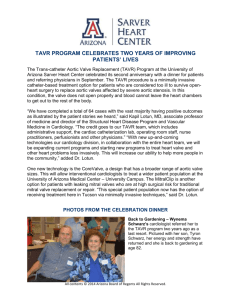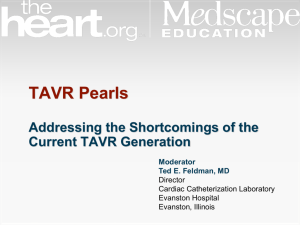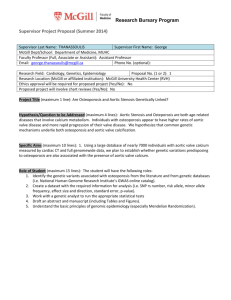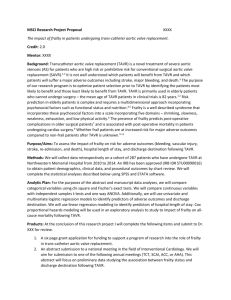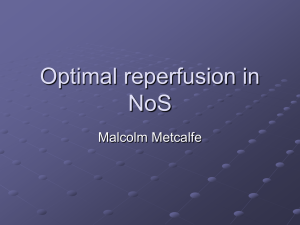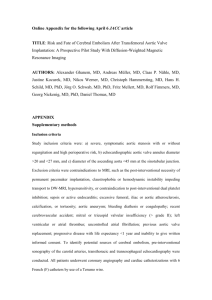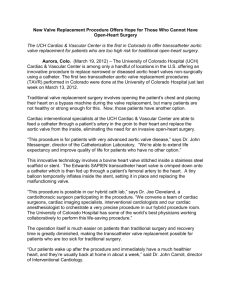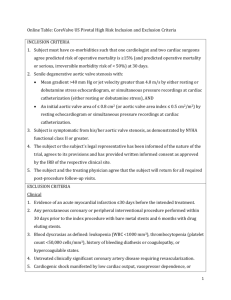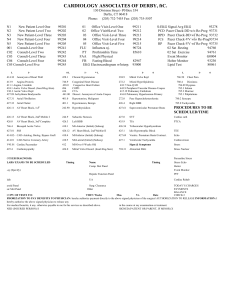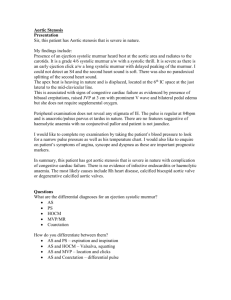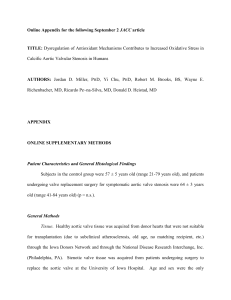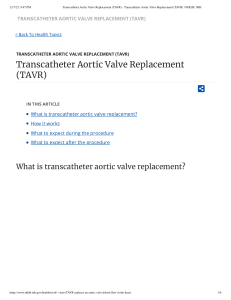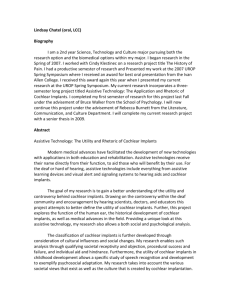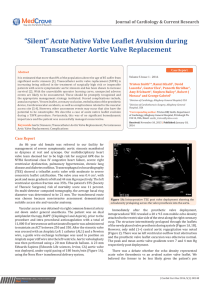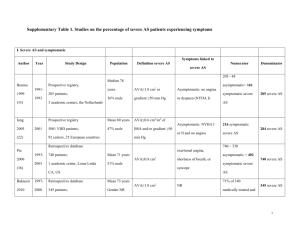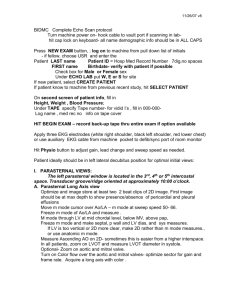Structural Heart Disease Program Celebrates New Technology
advertisement
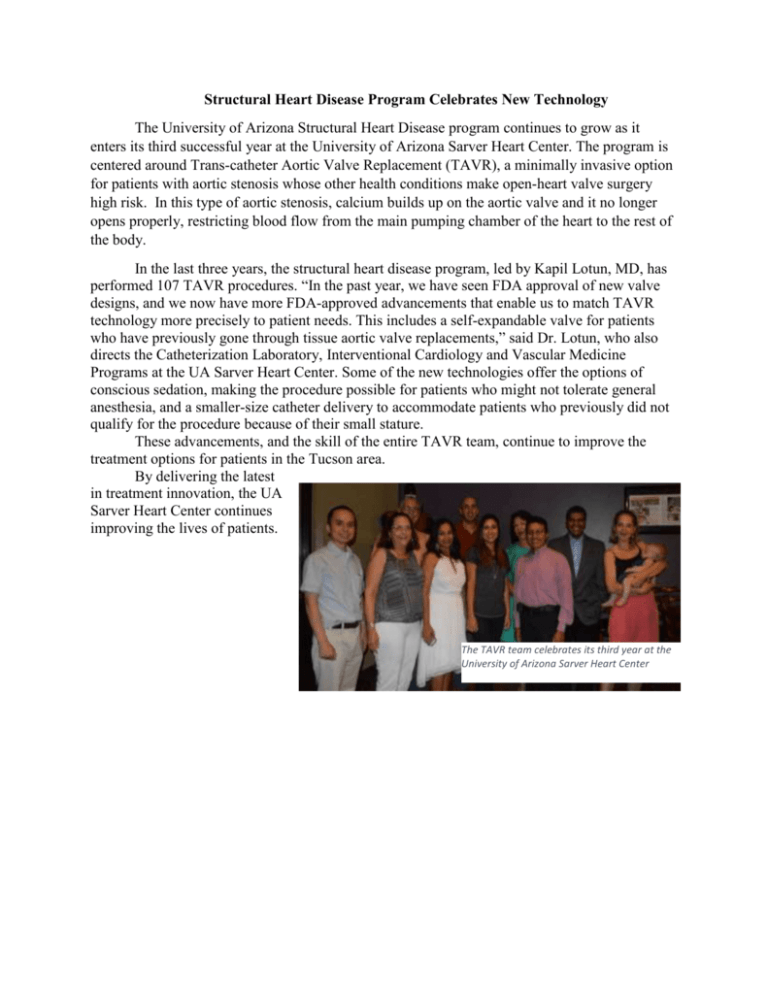
Structural Heart Disease Program Celebrates New Technology The University of Arizona Structural Heart Disease program continues to grow as it enters its third successful year at the University of Arizona Sarver Heart Center. The program is centered around Trans-catheter Aortic Valve Replacement (TAVR), a minimally invasive option for patients with aortic stenosis whose other health conditions make open-heart valve surgery high risk. In this type of aortic stenosis, calcium builds up on the aortic valve and it no longer opens properly, restricting blood flow from the main pumping chamber of the heart to the rest of the body. In the last three years, the structural heart disease program, led by Kapil Lotun, MD, has performed 107 TAVR procedures. “In the past year, we have seen FDA approval of new valve designs, and we now have more FDA-approved advancements that enable us to match TAVR technology more precisely to patient needs. This includes a self-expandable valve for patients who have previously gone through tissue aortic valve replacements,” said Dr. Lotun, who also directs the Catheterization Laboratory, Interventional Cardiology and Vascular Medicine Programs at the UA Sarver Heart Center. Some of the new technologies offer the options of conscious sedation, making the procedure possible for patients who might not tolerate general anesthesia, and a smaller-size catheter delivery to accommodate patients who previously did not qualify for the procedure because of their small stature. These advancements, and the skill of the entire TAVR team, continue to improve the treatment options for patients in the Tucson area. By delivering the latest in treatment innovation, the UA Sarver Heart Center continues improving the lives of patients. The TAVR team celebrates its third year at the University of Arizona Sarver Heart Center
